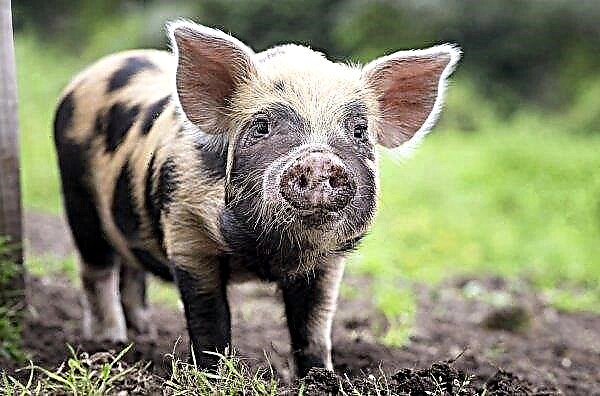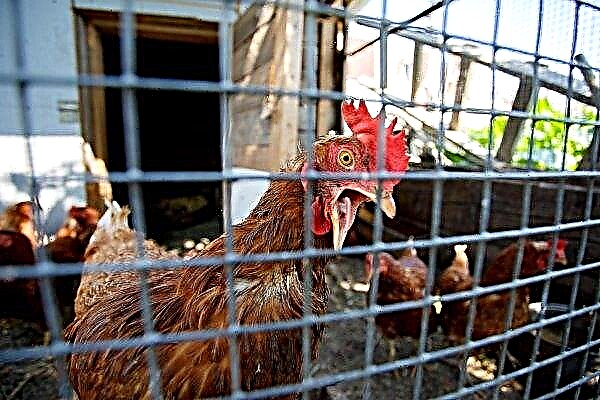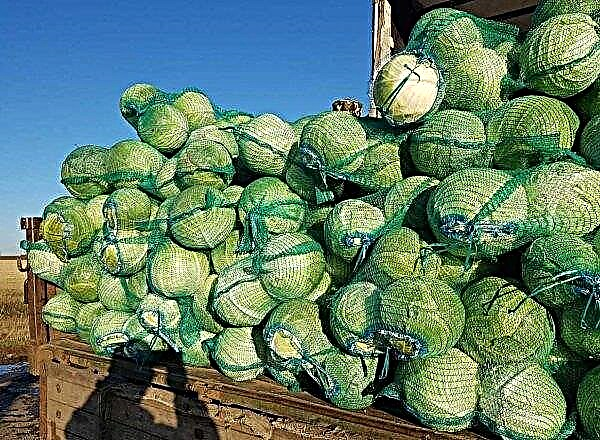In Russian flower beds, you can often find lush bushes of narrow-leaved greenery, decorated with beautiful flowers. Skilful gardeners make it so that as soon as one variety of this wonderful culture fades, the next one immediately blossoms. These are irises, and this article will be devoted to a description of their various varieties, with attached photos and names.
Bearded Irises
This variety of iris was called bearded because, unlike other representatives of the culture, on the corrugated petals of its flowers there are thick bristly paths. They consist of short hairs located on the outside of the lower tier of fouls, and can have a different color. The height of bearded irises can vary from 30 cm (dwarf) to 110-120 cm (tall). The color and size of the flowers also depend on the variety to which the plant belongs. Thanks to the tireless work of breeders, there are thousands of varieties of bearded irises, just below are descriptions of some beautiful varieties.
The iris flower consists of 6 petals, 3 of which are directed upwards and, closing, form a kind of dome, they are called “standards”. The 3 lower ones are directed to the sides and bent downwards, professional gardeners usually designate them as “fouls”. On their outer side are bristly beards made of hairs.Did you know? In Russia, plants, now known under the Latin word "iris", had their own name: cockerels, saber or squirrel.
Gypsy lord
Lord Gypsy belongs to Keppel's selection. The variety belongs to plants with medium-late periods of bud formation. The height of the fruit arrow is from 95 to 102 cm. The bicolor flowers are large, with large petals, the middle (standards) are boiling white, the lower fouls are ink blue with a central white spot and rays of the same tone that randomly cross the dark border. The beard consists of bright scarlet hairs that looks very beautiful.
The plant blooms in the period from late June to mid July, more accurate dates depend on the climatic zone of planting and the age of the root system. Developing, the fruit bud on the rhizome throws a bunch of leaves (5–7 pcs), green, with a slight bluish plaque on the soil surface. When they reach a height of 20–25 cm, arrows appear, on each of which 2 to 7 buds are formed. They bloom in turn, at the same time 3-4 flowers can unfold. Individual garter to a wooden or metal vertical support is recommended.
Digging out the roots of Lord Gypsy and dividing them into small divisions costs no more than once every 5-6 years, after which they should be planted at a distance of at least 20-25 cm from each other. It is recommended to break the flowerbed for this variety in a place where the sun is present throughout the daylight hours. This arrangement will contribute to the most spectacular flowering.
Gypsy Lord prefers neutral to slightly acidic ph. In the year of planting irises, the soil must be saturated with organic matter, after which annually apply mineral fertilizers in the spring and after the end of the growing season.
Important! On the fruit arrow of irises, wilted and blooming flowers may be simultaneously present. It is recommended that the gardener remove dried buds by hand, not only to prevent a decrease in the beauty of the plant, but also to stimulate the development of new buds.
Beverly sills
Beverly Sils belongs to the early group of German irises, which have a medium size and coral pink shade of large thin petals with a corrugated edge. The bristly beard is painted the same color.
Beverly Sills bush reaches 80-100 cm in height, its leaves are attached directly to the base of the fruit arrow in groups of several pieces. Since the plant is tall, it requires a mandatory garter to help maintain a vertical position throughout the growing season. The leaves are narrow and elongated (up to 50 cm) with a sharp tip, dense, located perpendicular to the peduncles, which can be from 1 to 3 pcs. Their number depends on the care of the iris and the degree of soil fertility.
Frost resistance of Beverly Sills is very good, it can be grown without additional shelter for the winter, but only if the roots do not peek out onto the ground. Flowers begin to bloom in the second half of May or the first half of June, this period stretches to 4 weeks. If the beginning of summer is very hot and the air temperature exceeds +25 ... + 27 ° C, it will end much faster.
Beverly Sils loves a sunny location, but without loss for decorativeness can develop in a small shadow. Equally does not tolerate both prolonged drought and stagnation of moisture in the roots. The first causes the fruit buds to dry out, and the second causes the development of root rot or fungal diseases in the underground part of the iris.
Important! If a gardener needs artificial irrigation of a flower bed with irises, it must be carried out by supplying water directly under the root. It is categorically not allowed to irrigate by sprinkling, as the thin flower petals get wet and sag under their own weight, after which they completely lose their beauty.
Decadence
Irises Decadens is a very elegant handsome man with increased corrugation of the thinnest petals. Standards consist of two shades, golden yellow and pale lilac, fouls painted in a dark purple tone with a cuff of ruffled apricot color. A bright orange beard contrasts the ink color. The diameter of the buds reaches 10 cm, the height of the bush is 96 cm.
The color of the xiphoid leaves and peduncles is the same, gray-green. The leaves are arranged vertically, for a long time they retain decorativeness even after the end of the period of fruiting of irises. Several fruit arrows can form at the same time, each of which will have up to 7 buds.
Loves sunny places, acceptable location in a small shade. The first buds unfold closer to mid-summer, flowering lasts from 14 to 21 days. During this period, the plant is demanding on soil moisture. The Decadence variety is the owner of almost all exhibition medals among cultural representatives (Honorable Mention, Walter Cup, Award of Merit). Perfect for cutting into bouquets, while in cool fresh water, it remains elastic for a long time.
Without a garter, it quickly loses its decorative effect, since the stems with flowers lie on the ground and get dirty in dust, or are formed ugly, twisted. For industrial cultivation, it is recommended to cut the vertical flower network over the garden or flowerbed immediately after the first weeding. The optimal height of the arrangement is 50 cm.
Did you know? From the rhizome of iris, an industrial method is used to extract valuable oil used for the manufacture of expensive perfumes as a flavoring. This substance is so expensive that artificial substitutes such as iron are used for cheap products.
Tour de france
The Tour de France refers to medium-tall bearded irises, whose height rarely exceeds 90 cm. At the same time, several large buds can open up, having a diameter of up to 15 cm in a turn. Standards collected in a lush lump are painted in a snow-white color. Fouls - bright yellow, with often located veins a little darker in color and beards of the same color.
Early flowering of Tour de france occurs at the beginning of the summer season, in different regions at this time occurs with an interval of several weeks, depending on the growing climate. The bush requires additional support, as it is prone to lodging on the soil under the influence of showers and wind. The affinity of the variety is good. In order to preserve the decorativeness of flowers, Tour de france is recommended to be grown under a transparent polycarbonate canopy or in open greenhouses using drip irrigation. This will exclude contact of the petals with water, which threatens with a loss of beauty and the impossibility of further sale of plants.
In order to preserve the decorativeness of flowers, Tour de france is recommended to be grown under a transparent polycarbonate canopy or in open greenhouses using drip irrigation. This will exclude contact of the petals with water, which threatens with a loss of beauty and the impossibility of further sale of plants.
Tall and narrow, green leaves resemble the shape of a sword, fruit arrows are strong, 2-7 flowers are usually formed on each of them. Their number depends on the health and age of the rhizome, as well as growing conditions. This variety of iris is very demanding on mineral and nitrogen top dressing, which must be carried out at least 2 times a year (in spring and late summer).
Unpretentious to the location, with the same success can develop both in the sun and in partial shade. It is quite resistant to low temperatures, but in order to preserve the rhizome, with the onset of the first frosts it is advisable to additionally warm the soil with any heating material (spunbond, agrofibre, spruce branches or sawdust). This is especially true of the northern regions of Russia (Urals, Transbaikalia).
Edith wolford
The variety enters the flowering period in late spring, closer to the end of May. If the air temperature is moderate and there is no heat, then the buds open gradually, one after another, almost throughout the next month. In the middle of spring, xiphoid leaves collected in a bunch appear from the ground, after which the plant throws strong, but thin, arrows.
On each of them, about 6 fruiting buds can develop. Large flowers, painted in two shades, are 10–15 cm across. The width of each of the six petals reaches 6–7 cm, they have a thin and delicate structure, and a wavy corrugation is located on the edge. Standard - the color of the petals has a golden yellow tone, fouls - dark blue, smoothly turning into purple.
Irises of Edith Wolford are very fond of full lighting, and therefore, it is difficult for a gardener to get a well-developed plant in a shaded flowerbed. Usually in such conditions they look stunted or twisted, often they refuse to form buds. Irises Edith Wolford has been repeatedly awarded at flower shows in different countries and is a recognized cultural standard.
Important! Since the height of the Edith Wolford irises is at least 100 cm, when grown in private garden plots, they need to be tied to wooden or metal stakes. In industrial production, mass garter is carried out by horizontal mesh support with cells of at least 10–12 cm.
Edith Wolford is often grown for cutting, this is due to the fact that the bouquet does not lose freshness and elasticity for a long time. If you change the water daily, then it can stand in a vase for 7-10 days.
Edith Wolford develops well on light fertilized substrates, therefore, in order to get lush flowering, irises are fed at the beginning of the growing season and in autumn, after the bushes begin to dry out. The variety is rapidly increasing the volume of underground rhizomes, so it is advisable for the gardener to separate them every 3-4 years. Ripe roots are usually light brown in color. Digging is best done in August, choosing dry weather for this.

Beardless irises
Ethen a rather large group of irises without bristly beards on the inner petals. They begin to blossom when this period ends with the bearded representatives of culture. Having correctly selected varieties for the flowerbed, the gardener will be able to decorate his plot with constant flowering, as the plants will enter this phase one after another.
Beardless irises are divided into such varieties:
- marsh;
- bristly;
- multi-colored;
- smooth.

Beardless flowers are simpler than bearded irises, and they also do not have such a rich palette of shades that are compensated by resistance to weather factors and diseases, early and prolonged flowering (often over 30–35 days). Some varieties (marsh and smooth) are valued for their ability to tolerate waterlogging of the basal zone or even landing in shallow water off the coast.
Did you know? Irises have long been known to mankind. Scientists found their image on the ancient frescoes of the Knossos Palace in Crete. This historic building is over 4000 years old.
The only drawback is that some representatives of the marsh iris have southern ancestors, therefore they are afraid of frost and need additional shelter for the winter.
Double standart
Double Standard belongs to the Siberian group. The plant is tall, differs from other beardless varieties by abundant flowering, the bush grows to 70 cm. The leaves are green, with a blue tint, narrow, not wider than 2-3 cm, tall, upright.
Large flowers have a dark lilac tone, on the verge of turning into a purple hue. Closer to the base of the petal, the color is replaced by thick white strokes located in the form of a hemisphere. The bud has a diameter of at least 15 cm, it remains in this form for 5-6 days. Each arrow has 3 to 6 fruit buds. The first buds begin to unfold in May or June.
Double Standart tolerates partial shadow well, but is not able to grow in marshy areas, as this leads to rotting of the root system. It adapts to long periods of drought without problems, the rhizome survives frosty winters without loss. Siberian iris of this variety is absolutely not picky about soil nutrition, is not afraid of cold windy weather. It can be grown in one place for 8-10 years, this will not adversely affect flowering.
I see stars
These irises also belong to the Siberian variety. The flower is located on strong arrows, which on one plant can be quite a lot (3–7 pcs). Fouls are painted in a blue-violet tone with darker veins and white eyes at the base, occupying up to 2/3 of the area of the petal, the standards are of the same tone, without additional blotches.
 The leaves are narrow, tall, up to 50 cm, bluish-green, fastened in a bundle to the rhizome kidney. The total height of the bush varies between 70–80 cm. I See Stars refers to plants that bloom in the middle (June or July). The farther south the growing region is, the earlier this period begins.
The leaves are narrow, tall, up to 50 cm, bluish-green, fastened in a bundle to the rhizome kidney. The total height of the bush varies between 70–80 cm. I See Stars refers to plants that bloom in the middle (June or July). The farther south the growing region is, the earlier this period begins.
The variety can withstand short-term seasonal waterlogging of the roots without problems, but if it is in this state for a long time, it begins to hurt and may die. He likes soil with a neutral or slightly acidic PH (optimally loam), as well as a lowland location. If I See Stars is planted on a small hill, it will need to be regularly watered during the summer, but in moderation, so that the soil is constantly slightly moist.
Did you know? In the old days, Western Slavs called irises "perunik", believing that they grow where the lightning of the god of thunder Perun fell.
Imperial opal
Imperial opal is a variety characterized by abundant flowering. Bush height 80–90 cm, width up to 40 cm. The leaves are thin, saber-shaped, green, fruit arrows are elastic, erect. On each, up to 6 large flowers bloom, the diameter of which reaches 12 cm. The petals are plain, bright lilac in color, with a slightly darker mesh of veins. It develops equally well both in places illuminated by the sun and in flowerbeds that partially fall into the shade.
Flowering occurs in the last decade of May or the first month of summer, in the south, these periods may shift slightly forward in time. The winter hardiness and drought tolerance of the variety Imperial Opal is very high, the plant is not demanding on the care and content of nutrients in the soil. It is not necessary to separate the rhizomes of adult bushes too often, it is optimal to observe an interval of 4-5 years between procedures.
Katharine hodgkin
Katerina Khodzhkin, the variety belongs to the iris family, but to their unusual variety - the herododictiums, which under the soil are not rhizomes, but bulbs. Plants bloom very early in late spring. More precisely, this period depends on the weather and the climatic zone of cultivation. By this time, the bushes reach a height of 15 cm, but do not stop there, but continue to grow until they rise to 50-60 cm.Usually this happens in the middle of summer, after which the greens begin to fade and completely dry.
The leaves are thin, lanceolate, green, 1.5–2 cm wide. The variety is highly decorative, the petals of low-growing flowers have an unusual color: from a distance they appear bluish-striped, each has a bright yellow spot and dark blue, randomly scattered, strokes . They are small in size, their diameter rarely exceeds 5-6 cm.
Herododictium Katharine Hodgkin is transplanted in early autumn, like other bulb crops (tulips, daffodils). The signal that it is time to begin work on dividing the mother bush into several separate ones is the appearance of children on the central bulb. They need to be planted in the soil at a distance of 10 cm from each other, to a depth of 8 cm, depending on the size of the bulbs (large ones are deeper).
Did you know? Irises got their name from the Greek word translated into Russian as "rainbow". These flowers show a large color palette.
Kita-no-seiza
Kita No Siza is a very beautiful representative of the Siberian group. Plant height up to 80 cm, width up to 40 cm. The bush is decorated with numerous green and narrow leaves. On fruit arrows, 2–6 gradually opening buds are formed. Their petals have a delicate lavender color, closer to the base of the mount turning into yellow-green. When opened, the bud is up to 12 cm across, it remains in this position for up to 5 days, after which it fades. Abundant flowering occurs in the first half of summer.
 Kita-No-Seiza does not require frequent transfers to a new location, as well as a sunny location. To stagnation of water in the roots, it reacts with the development of fungal diseases and rot. It has excellent resistance to subzero temperatures and drought.
Kita-No-Seiza does not require frequent transfers to a new location, as well as a sunny location. To stagnation of water in the roots, it reacts with the development of fungal diseases and rot. It has excellent resistance to subzero temperatures and drought.
Irises or killer whales are a wonderful, unpretentious, beautifully flowering culture that can decorate a flower bed for several summer months. A skilled gardener will pick varieties so that when they bloom, they gradually replace each other.












